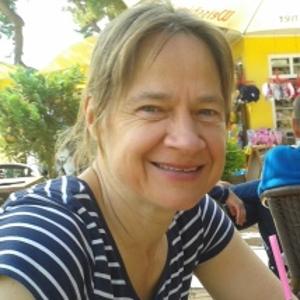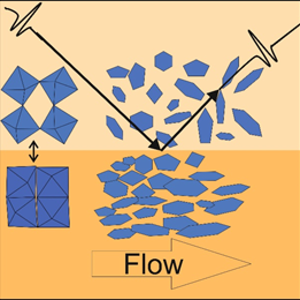
Christine Thomas, Professorin für Seismologie an der Universität Münster
© Christine Thomas
Den Auftakt unserer Seminarreihe des SPP2404 DeepDyn macht Prof. Christine Thomas (Universität Münster) mit einem Vortrag über "Seismic structures at the CMB". Der Vortrag findet auf Englischer Sprache statt.
Registrierung externe Seminargäste am Zoom Meeting
Wir bitten externe Seminargäste sich unter untem folgendem Link für das Seminar zu registrieren:
Sie erhalten am Morgen des Seminares den Link zum Zoom Raum auf die registrierte Emailadresse.
Sollten Sie generell an allen Ausgaben der Seminarreihe interessiert sein können Sie ich auch alternativ in der Info-Mailinglist des Schwerpunktprogrammes eintragen, um die Links zu den Seminarvorträgen zu erhalten.
Abonnieren der Info-Mailinglist
Mitglieder des Schwerpunktprogrammes müssen sich nicht registrieren, sondern erhalten den Link über unsere Mailingliste.
Seismic structures at the CMB

© Christine Thomas
Abstract
Understanding structure and mineralogy in the lowermost Earth's mantle (D" layer) provides important constraints on mantle and core dynamics. Especially the reflection off the D" layer has been used in the past to constrain the depth of this layer, and to determine the mineralogy within D". Using additional observations of polarities of these waves allows a better understanding of velocity (and density) changes across the D" reflector. Furthermore, using the polarities of D" reflections in combination with shear wave splitting of ScS waves that traverse the D" layer, we can determine the style of deformation in this layer which provides further knowledge on mantle flow. Detection of D" anisotropy is usually carried-out with shear wave splitting analysis alone. To constrain azimuthal anisotropy and infer mineralogy and deformation style, a number of crossing paths is usually necessary. But when we use the approach that utilises the polarity of P- and S- wave reflections from the D" discontinuity, compared with the main phases P and S, and combine these measurements with ScS splitting results, we find that azimuthal coverage is less important. Using deformation scenarios for a number of lower(most) mantle candidate materials, we calculate the reflection coefficient for P and S-wave reflections and ScS splitting predictions and find that we can constrain the mineralogy responsible for the D" reflection and anisotropy in several regions.
Link zum nächsten Seminarvortrag
Short stories on traveling crust to core with a bright lamp: white-laser spectroscopy for physical properties of the deep Earth
